.jpg)
The S4D425: Extensibility for SAP S/4HANA course equips learners with practical knowledge to enhance and adapt SAP S/4HANA without disrupting the standard core. It covers extensibility options including custom fields, logic, UI adaptations, and side-by-side extensions via SAP BTP. Participants gain hands-on experience using tools like CDS views, key user apps, and the SAP Business Application Studio to build upgrade-safe and scalable business solutions.
Extensibility for SAP S4HANA -S4D425 Training Interview Questions Answers - For Intermediate
1. What are the different types of extensibility in SAP S/4HANA?
SAP S/4HANA supports four types of extensibility: in-app extensibility, side-by-side extensibility, classic extensibility, and managed extensibility. In-app extensibility enables key users to adapt the system using Fiori tools. Side-by-side extensibility allows developers to build applications on SAP BTP using APIs. Classic extensibility refers to legacy methods like user exits and enhancements, mostly used in on-premise systems. Managed extensibility is available in SAP S/4HANA Cloud, where SAP controls the lifecycle of extensions within predefined frameworks, ensuring upgrade safety.
2. How does SAP Business Application Studio support extensibility?
SAP Business Application Studio (BAS) provides a cloud-based integrated development environment that supports side-by-side extension development. Developers can use BAS to build SAP Fiori apps, CAP-based services, and deploy them to SAP BTP. BAS offers templates, debugging tools, Git integration, and support for multiple programming languages. Its integration with the SAP ecosystem streamlines the development and deployment of extensible applications that interact with SAP S/4HANA.
3. What is the ABAP RESTful Application Programming Model (RAP)?
The ABAP RESTful Application Programming Model (RAP) is a framework for developing modern and cloud-ready applications in ABAP. RAP supports the development of OData-based services using CDS views, behavior definitions, and service bindings. It enables developers to implement clean, modular, and upgrade-safe extensions in S/4HANA using standardized methodologies, promoting both in-app and side-by-side extensibility with clear separation of concerns.
4. How does SAP BTP enable side-by-side extensibility?
SAP Business Technology Platform (BTP) provides the infrastructure, tools, and services to develop, integrate, and run applications outside the S/4HANA core system. With BTP, developers can create new functionalities, consume APIs from SAP S/4HANA, and leverage services like identity authentication, connectivity, and workflow. This enables businesses to extend processes in a scalable way while maintaining a clean core and simplifying upgrades.
5. Explain how extension fields work across different layers in SAP S/4HANA.
Extension fields created using the “Custom Fields and Logic” app can propagate across the UI, business logic, and data models. When a field is added, it becomes available in CDS views, forms, and APIs automatically, depending on the scope chosen. This cross-layer enablement ensures consistency and reduces development effort, allowing for seamless end-to-end use of the custom field.
6. What is the role of annotations in CDS views in extensibility?
Annotations in CDS views provide metadata that enhances how the data model is interpreted and used in UI, analytics, and services. For extensibility, annotations define UI behavior (e.g., label, tooltip), service exposure, and analytical semantics. These annotations make CDS views adaptable and ready for consumption in SAP Fiori apps and APIs, improving reusability and extensibility.
7. How does UI adaptation at runtime benefit key users?
UI adaptation at runtime enables key users to personalize and adapt Fiori UIs directly in the browser without needing developer support. They can add, hide, move, or rename fields and groups, creating a user-specific or role-specific experience. These adaptations are stored in the system and transported across clients, making them a powerful feature for user-centric extensibility in SAP S/4HANA.
8. How are extensibility items transported in SAP S/4HANA Cloud vs On-Premise?
In SAP S/4HANA Cloud, extensibility items like custom fields and logic are managed through the extensibility framework and transported using software collection and export/import processes. In the on-premise version, these items are included in traditional ABAP transport requests. The cloud approach ensures stricter governance and lifecycle control to meet SaaS requirements, whereas on-premise offers more flexibility.
9. What is a Communication Scenario in the context of extensibility?
A Communication Scenario in SAP S/4HANA defines a set of APIs and communication arrangements that allow external systems to interact with the core system securely. In extensibility, it is used to expose services such as custom OData or SOAP APIs. This structure simplifies integration setup by bundling multiple APIs under one umbrella, streamlining access control and data exchange.
10. What is the purpose of Behavior Definitions in RAP model?
Behavior Definitions in the RAP model specify how CDS entities behave during operations like create, update, delete, and read. They define business logic, validations, and transactional consistency for custom applications. In extensibility, behavior definitions allow developers to encapsulate complex business logic in a clean and reusable manner without modifying the core application logic.
11. How do you handle versioning in extensible applications?
Versioning in extensible applications ensures backward compatibility and upgrade safety. When building APIs or custom services, developers can create new versions while keeping the old ones active, allowing consuming applications to continue functioning. SAP’s API Hub and CAP framework support version control, which is essential for maintaining multiple integration touchpoints during enhancements or migrations.
12. How do you manage security in side-by-side extensibility scenarios?
Security in side-by-side extensions is managed using role-based access control (RBAC), OAuth 2.0 authentication, and identity federation through services like SAP Identity Authentication Service (IAS). Developers must ensure secure consumption of S/4HANA APIs by registering clients, defining scopes, and managing user roles on both SAP BTP and the backend system. Proper audit and logging also play a vital role in maintaining security.
13. What is the role of SAP API Business Hub in extensibility?
SAP API Business Hub serves as a central repository of pre-defined APIs, integration flows, and events provided by SAP. For extensibility, it allows developers to discover and consume standard APIs from SAP S/4HANA and other SAP solutions. This accelerates development, reduces risk, and ensures compliance with SAP standards when building side-by-side or integrated applications.
14. How are extensibility objects tested in SAP S/4HANA?
Extensibility objects like custom logic, fields, and services are tested using tools such as the Fiori Test Automation Tool, Postman for APIs, and standard unit testing in ABAP. Key user changes can be tested in sandbox environments using test plans. For side-by-side extensions, developers also use local or BTP-based test environments with mocking and integration tools to ensure reliability.
15. Can extensibility be applied to embedded analytics in SAP S/4HANA?
Yes, extensibility is integral to embedded analytics in SAP S/4HANA. Custom CDS views can be created or extended with analytical annotations to generate custom reports, KPIs, or dashboards. These analytical extensions can be consumed in SAP Fiori Elements, SAP Analytics Cloud, or other BI tools. This empowers businesses to create tailored insights from their extended data models without touching the standard ones.
Extensibility for SAP S4HANA -S4D425 Training Interview Questions Answers - For Advanced
1. How do SAP Extension Suite and SAP Integration Suite complement each other in the extensibility landscape of S/4HANA?
SAP Extension Suite and Integration Suite are integral to creating a cohesive extensibility strategy in S/4HANA. The Extension Suite enables developers to build custom applications, UIs, workflows, and mobile apps that enhance or add functionality to core processes—primarily through tools like SAP Business Application Studio, SAP Fiori Elements, and CAP. The Integration Suite, on the other hand, ensures seamless communication between these custom apps, third-party systems, and SAP S/4HANA via APIs, connectors, and prepackaged content. Together, they support a clean core architecture by promoting side-by-side extensibility and enabling API-first, loosely coupled, event-driven models. Their integration capabilities also provide the agility required for digital transformation and innovation without destabilizing the core system.
2. What are the key design principles behind custom CDS views to ensure extensibility without compromising system stability?
Designing custom CDS views for extensibility requires strict adherence to modularity, reusability, and performance principles. Developers should start with base views (Interface Views) that directly model the database and then layer composite views and consumption views on top to separate concerns. Field annotations should be used judiciously to control UI rendering, analytics, and OData exposure. Avoiding deep joins, selecting only necessary fields, and limiting aggregations enhance performance. CDS views must be extensible themselves—by allowing associations rather than hard joins—so that future adaptations don’t require rewriting the original definition. Most importantly, CDS views should avoid referencing deprecated or internal-only tables and instead rely on released APIs and views as per SAP’s extensibility guidelines.
3. Can you explain how lifecycle-aware business events enhance extensibility in S/4HANA?
Lifecycle-aware business events are predefined SAP events that are triggered by changes in the state of business objects (like creation, status change, or deletion). These events significantly enhance extensibility by allowing developers to create responsive, event-driven applications that react to core business changes without modifying the standard codebase. For instance, when a purchase order is created, a ‘PurchaseOrder.Created’ event can be consumed by a custom side-by-side application to trigger a supplier notification or initiate a follow-up process. These events promote decoupling, asynchronous processing, and better scalability. Developers can subscribe to them through SAP Event Mesh or other brokers and handle them in SAP BTP using CAP, Node.js, or serverless runtimes—keeping the S/4HANA core clean and lean.
4. How do you secure custom extensions in a multi-tenant cloud environment using SAP BTP?
Securing custom extensions in a multi-tenant environment requires a robust strategy for authentication, authorization, data isolation, and tenant provisioning. SAP BTP supports multi-tenancy by offering the SaaS Provisioning Service and SAP Authorization Management for tenant-aware service instances. Developers must implement tenant-specific routing logic in their CAP or Java/Node.js applications. SAP Identity Authentication Service (IAS) can manage secure login and federated identity across tenants. Authorization scopes should be defined and enforced at both the UI and service layers, ensuring users access only what is relevant. Sensitive data must be strictly partitioned per tenant, often by schema separation or field-level tagging, depending on the extensibility scenario. All APIs exposed must be protected via OAuth2 and have scope-based access policies.
5. What are adaptation transports and how do they affect extensibility in S/4HANA Cloud?
Adaptation transports are mechanisms for moving extensibility-related configurations and developments—such as custom fields, logic, or UIs—from one tenant or system to another in S/4HANA Cloud. These transports ensure that extensions made in the development or test environments are properly packaged, version-controlled, and deployed in production systems without loss or inconsistency. Unlike traditional on-premise transport requests, adaptation transports are often scoped to business contexts (e.g., custom business objects, CDS extensions, or logic implementations). They play a crucial role in maintaining a clean-core strategy, as they encapsulate extensibility artifacts in a way that’s reversible and upgrade-safe. SAP also provides tools to validate transport content for compatibility before release cycles.
6. How does the concept of reusability manifest in SAP extensibility tools like Custom Business Objects and CDS views?
Reusability in SAP extensibility tools refers to the ability to design components (data models, services, or logic) once and use them across various business applications or contexts. For Custom Business Objects (CBOs), this means defining generic entities with broad applicability—like contact details or audit logs—that can be embedded into multiple apps. In CDS views, reusability is achieved by designing layered views where base views can be reused in multiple composite or consumption views. CDS annotations further support reusability by dynamically controlling behavior without hardcoding it into the view logic. Reusable components reduce duplication, accelerate development, and ensure consistent behavior across apps while remaining maintainable over system upgrades.
7. How does SAP handle extensibility for industry-specific solutions within S/4HANA?
SAP supports extensibility for industry-specific solutions by offering tailored enhancement options such as industry-specific BAdIs, custom fields, and pre-configured APIs. These options are scoped to industry scenarios like utilities, public sector, or automotive, and are aligned with SAP's industry cloud initiatives. SAP ensures these extensions can coexist with core processes without modification through modular design and released APIs. Industry packages often come with their own extensibility layers that follow the same principles of clean core, upgrade safety, and side-by-side development. In many cases, industry-specific requirements are handled using SAP BTP, where vertical-specific microservices can be created and integrated without interfering with standard code.
8. What is the impact of extensibility on test automation in S/4HANA, and how can you manage it?
Extensibility introduces custom logic, data structures, and UI elements that need to be thoroughly tested to avoid regressions during upgrades or deployments. Test automation becomes critical in such scenarios. SAP provides tools like the ABAP Unit Test Framework, UI5 Test Recorder, CBTA (Component-Based Test Automation), and eCATT to automate testing for extensions. For RAP-based developments, behavior implementations can be unit tested using test doubles and mocks. Test data containers and CDS test double frameworks help in simulating business scenarios. Developers must include extensibility artifacts in their test coverage, define automated pipelines (CI/CD), and ensure backward compatibility, especially when extensibility is customer-facing or industry-specific.
9. How do extension fields get transported in SAP S/4HANA Cloud and what checks ensure their correctness?
In SAP S/4HANA Cloud, extension fields created via the Custom Fields app are automatically part of the extensibility lifecycle and are included in transportable software collections. These collections can be moved across tenants (e.g., from development to test to production) using SAP's adaptation transport mechanism. Before transport, the system performs validations like field name uniqueness, data type consistency, usage coverage (e.g., in UI, APIs, CDS views), and cross-dependency checks. Post-import, the system applies these fields to all relevant business contexts and artifacts. Transport logs and test validations help ensure successful migration and detect any mismatches in field usage or integration points.
10. What mechanisms does SAP provide to monitor extensibility artifacts in S/4HANA environments?
SAP provides several tools and frameworks to monitor extensibility artifacts. In S/4HANA Cloud, the Extensibility Catalog offers an overview of custom fields, logic, UIs, and business objects. Logs for Custom Logic and CDS view extensions can be accessed through the Extensibility App suite. For on-premise, transaction codes like SCU3 (change logs), SLG1 (application logs), and ST05 (SQL Trace) help track behavior. SAP Cloud ALM and SAP Solution Manager also offer extensibility artifact monitoring across the landscape. Integration flows created in SAP Integration Suite can be monitored via the Monitoring Dashboard, while side-by-side apps on SAP BTP can be instrumented with SAP Application Logging or third-party tools like Grafana or Prometheus.
11. How do CAP-based services integrate with S/4HANA APIs and what considerations ensure long-term stability?
CAP-based services on SAP BTP can consume or expose OData and REST APIs from/to S/4HANA. Integration is typically achieved through SAP API Management or direct destinations in the XSSEC layer. For long-term stability, services must rely only on released and versioned APIs documented in SAP’s API Hub. CAP models should be versioned using semantic versioning and have fallback logic in case of API deprecation or changes. Caching, retry mechanisms, and security tokens (OAuth2) must be managed securely. CAP services should also abstract third-party or backend APIs using service definitions to reduce direct coupling and allow mock testing during upgrades or maintenance windows.
12. What is the significance of adaptation projects in UI5 extensibility, and how are they managed?
Adaptation projects allow developers to customize SAP-delivered UI5 applications without modifying the original codebase. Managed through SAP Web IDE or SAP Business Application Studio, these projects create a layered repository where custom changes are stored separately. This ensures that when SAP updates the base application, custom adaptations are preserved. Adaptation projects can modify views, controllers, or metadata (manifest.json) and are packaged as BSP applications or deployed to SAP BTP. Their significance lies in enabling business-specific UI tailoring—like hiding fields, changing labels, or injecting logic—while maintaining SAP’s update path. Governance tools and transport logs ensure that only authorized adaptations are moved across systems.
13. How does event mesh architecture contribute to loosely coupled extensibility in S/4HANA?
Event Mesh supports an event-driven architecture that enables systems to communicate through events rather than direct API calls. In S/4HANA, this allows decoupled extensions to listen for business events like order creation, status change, or delivery updates and perform actions asynchronously. This reduces system interdependencies, lowers latency, and improves scalability. Extensions developed in SAP BTP can subscribe to SAP-defined events via Event Mesh or third-party brokers like Kafka. It supports retries, queuing, filtering, and secure delivery. This architecture is especially useful for microservices-based extensibility, enabling real-time responsiveness without impacting core transaction performance.
14. What are the constraints of in-app extensibility in S/4HANA Cloud, and when is side-by-side the better option?
In-app extensibility in S/4HANA Cloud offers fast, safe customizations—such as adding fields, logic, and forms—but is limited by the predefined extension points and business contexts exposed by SAP. You cannot perform complex business operations, cross-module logic, or long-running workflows through in-app tools. Moreover, it doesn’t support custom user authentication flows or advanced analytics. In such cases, side-by-side extensibility using SAP BTP becomes the better option. It allows the creation of decoupled apps and services with full control over technology stack, deployment, and lifecycle. This is ideal for innovations that must evolve independently of S/4HANA release cycles or involve integration with non-SAP systems.
15. How do extensibility practices evolve with the rise of AI and machine learning in SAP S/4HANA?
As AI and ML become integrated into SAP S/4HANA through SAP AI Core, SAP AI Launchpad, and embedded intelligence, extensibility must evolve to accommodate predictive, prescriptive, and cognitive capabilities. Extensions now often include training data pipelines, inference service integration, and ML model versioning. Developers must consider data governance, privacy (GDPR), and inference reliability when embedding ML into extensions. SAP BTP provides tools to train and deploy models that consume S/4HANA data via APIs or events. Custom CDS views may also include AI-scored fields for decision support. Thus, extensibility moves beyond UI or business logic into intelligent automation, requiring developers to be fluent in data science and model governance in addition to ABAP or CAP.
Course Schedule
| Jan, 2026 | Weekdays | Mon-Fri | Enquire Now |
| Weekend | Sat-Sun | Enquire Now | |
| Feb, 2026 | Weekdays | Mon-Fri | Enquire Now |
| Weekend | Sat-Sun | Enquire Now |
Related Courses
Related Articles
Related Interview
Related FAQ's
- Instructor-led Live Online Interactive Training
- Project Based Customized Learning
- Fast Track Training Program
- Self-paced learning
- In one-on-one training, you have the flexibility to choose the days, timings, and duration according to your preferences.
- We create a personalized training calendar based on your chosen schedule.
- Complete Live Online Interactive Training of the Course
- After Training Recorded Videos
- Session-wise Learning Material and notes for lifetime
- Practical & Assignments exercises
- Global Course Completion Certificate
- 24x7 after Training Support



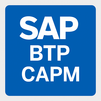
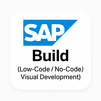
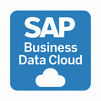

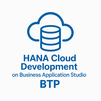
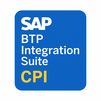
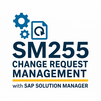

 Join our Live Instructor-Led online classes delivered by industry experts
Join our Live Instructor-Led online classes delivered by industry experts